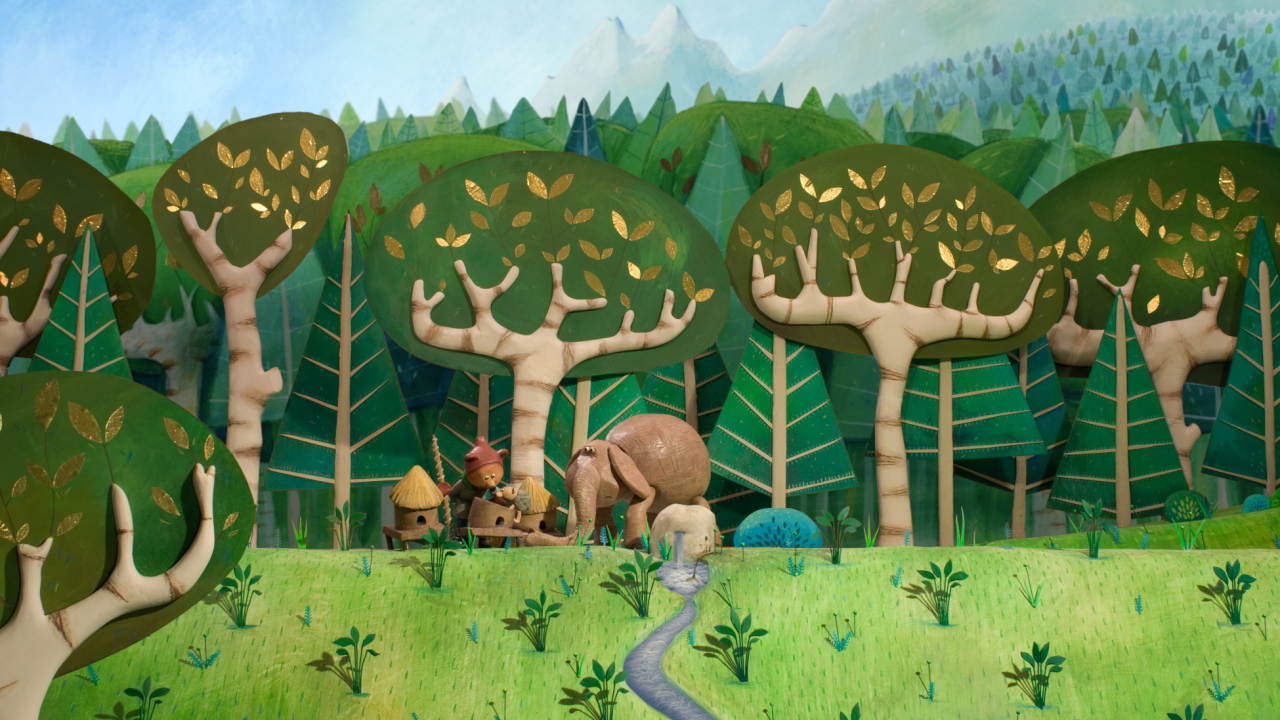
Mini-Lesson for Molly in Springtime
Mini-Lesson for Molly in Springtime
Mini-Lesson for Molly in Springtime: A Tale with a Message!
Theme: Principles
Ages: 9–11
Keywords/Topics: Good vs. Evil, Heros vs. Villians, Greed, Power, Friendships, Collaboration, Integrity, Justice, Fairness, Respect, Honesty, Kindness
Molly in Springtime, Pierre-Luc Granjon, provided by the National Film Board of Canada
Guiding Question: What are the most important qualities people and/or characters should possess?
Summary: Molly in Springtime is a fairy tale set in medieval times that explores the classic concept of good versus evil. Our young heroine Molly and her anthropomorphic friends must overcome various obstacles in order to defeat the deceitful Bonifacio and save the Kingdom of Balthasarville. Pierre-Luc Granjon’s puppet animation brings to light the importance of collaboration and integrity in the face of villainy. The story is told using a unique approach, through frames and scenes that mimic early silent movies, albeit in colour. This aesthetic engages the viewer and encourages them to reflect upon the courage it takes to not only stand up for what’s right, but to do what’s right. Students will have the chance to deconstruct the themes of honesty, integrity and collaboration through various discussions, creative-writing opportunities and art experiences (word collages), as well as share their thoughts on the characters’ actions through brainstorming exercises.
1) Are there circumstances in which stealing or being deceitful is acceptable?

Activities
- Discuss the idiom: He who laughs last, laughs longest. Who has the last laugh in this tale? What is Bonifacio’s motivation for making this statement?
- Brainstorm a list of villains from other tales/stories. What character traits do they have in common with Bonifacio?
- Create a Venn diagram, comparing and contrasting the qualities of a leader vs. a tyrant.
- Class debate: Should the consequences for Bonifacio’s actions be punitive or rehabilitative?
Go Deeper
Discuss the meaning behind the Japanese proverb depicting the three wise monkeys: Hear no evil, see no evil and speak no evil (a pictorial maxim). Choose a proverb or an idiom and design your own pictorial maxim explaining its meaning.
2) Why is it important to live with integrity?

- Provide examples of how Molly stands up for herself and what is “right.”
- Choose a quote and write about what it means to you, how it makes you feel and how it motivates you to do the right thing.
- Using an online collage maker or word-cloud generator, create a poster of positive and empowering phrases. Share your creation with the rest of the school.
- “Quack” is a homonym. Discuss whether King Quack is an appropriate name for Bonifacio. Why do you think he chose this name?
- Create a code of conduct for Bonifacio to adhere to.
Go Deeper
Learn more about International Women’s Day. Have students create a slideshow presentation about a female hero who has had a positive impact on society. Encourage students to dress up and/or use props to enhance their presentation. Learn about your school’s mission statement and/or code of conduct. Collaborate and create a code of conduct for your classroom.
3) Is it more beneficial to work alone or in a team?

Activities
- How did the characters’ individual roles/actions contribute to ousting Bonifacio and saving the kingdom?
- What message or messages will you take away from this fairy tale? Is your understanding of the story similar or different from your peers? Is it alright to have a different point of view/opinion?
- Choose your favourite character in the film. Write a letter of appreciation to them explaining what you admire most about them. Do you have anything in common with them?
- Write about an occasion where you collaborated with someone in order to help them succeed. How did that make you feel? How did the other person react?
- Create an acrostic name poem about a peer acknowledging their individual strengths/attributes.
- Have a random-act-of-kindness day in your school or classroom!
- Create a T-Chart. Graph students responses to the following question: Will Bonifacio return to wreak havoc on Balthasarville or re-appear as a narrator in another film?
Go Deeper
The bees helped Molly by pollinating the flowers. Learn more about bees and the importance of their role in nature and human survival. Research spring festivals around the world.
Sandra Fisher has been an elementary ELA/Math teacher since 1997. She is currently teaching Grade 3 at a bilingual International Baccalaureate school and confesses to owning enough picture books and teaching materials to open up a small shop. Her personal motto is: Eat, Teach, Sleep, Repeat! Outside of school, Sandra loves spending time hiking, swimming, playing volleyball, camping and travelling with her family.
Pour lire cet article en français, cliquez ici.
Discover more Mini-Lessons | Watch educational films on NFB Education | Watch educational playlists on NFB Education | Follow NFB Education on Facebook | Follow NFB Education on Pinterest | Subscribe to the NFB Education Newsletter
-
Pingback: Integrity – Character Education in May | TDSB Professional Library



